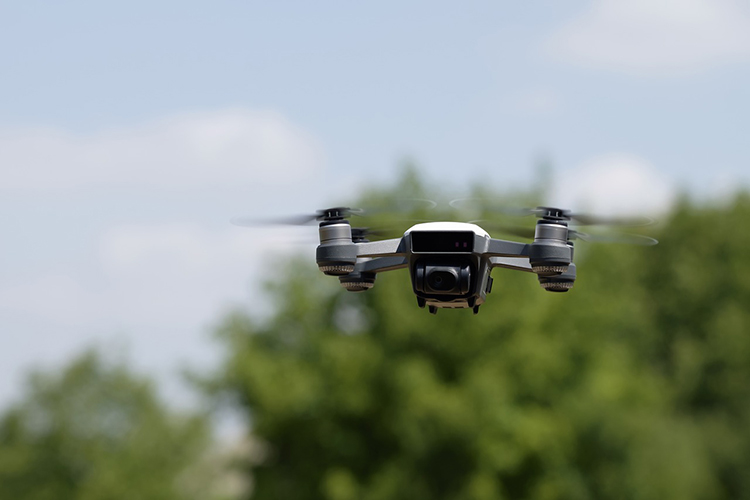Last week was, to say the least, very fascinating right here in the drone world.
On the one hand, the Newton case was a decisive win for the drone trade. In transient, final week a court docket in Newton, MA struck down a number of drone ordinances for being in direct battle with current FAA rules.

Image supply
This is nice information, as a result of it units a authorized precedent: native ordinances that stand in contradiction to FAA guidelines will in all probability not survive in the long term.
On the different hand, final week we noticed a video of an incredible however reckless FPV drone flight go viral, by which the pilot skims the high of a cargo prepare, weaves in and out of trusses in a bridge, goes below the prepare, and then geese into an open cargo compartment earlier than touchdown.
The video prompted chiding from many in the drone trade (together with us), but in addition led to some questions from our neighborhood. Yes, the flight was reckless, and additionally unhealthy for PR—if we had been politicians, we would say that the optics listed here are horrible—however was it authorized?
The brief reply is, unsurprisingly, no: the flying we see in the viral prepare video isn’t authorized.
Responding to a request for remark concerning the flying in the video, the FAA stated:
…all pilots shall keep away from flying straight over unprotected folks, vessels, automobiles or buildings and shall keep away from endangerment of life and property of others.
– Les Dorr, FAA Representative
However, this response was made with the assumption that the pilot in the video was a hobbyist, and would due to this fact be topic to area people security requirements like these specified by the Academy of Model Aeronautics (the authentic supply for the quote above).
Either means, the recklessness exhibited in the video would appear to be in direct violation of FAA pointers for drone pilots, which state: “Flying a drone in a reckless manner is a violation of Federal law and FAA regulations.”
And there’s additionally the situation of the place the pilot took off from and landed, since Union Pacific has a coverage towards unauthorized drone flights taking off from or touchdown on their land.
But the legality is, in some methods moreover the level. The major motive many people in the drone trade had been shaking our heads about the video is that it makes us as a neighborhood look unhealthy.
We’ve labored laborious to legitimize drones, and that work has been uphill. Just a few weeks again FAA Administrator Michael Huerta stated at InterDrone that Hurricane Harvey was a watershed second for the drone trade, as a result of drones had been on the nationwide stage for serving to folks, as a substitute of for privateness or different adverse issues.
So proper now, after we’re actually beginning to get some traction on the “drones for good” aspect, we’re all a little bit delicate to moments like this, that would make public notion backslide right into a morass of privateness and accountability issues.
(But hey, the man certain can fly.)
PR and Local Laws
The majority of native legal guidelines which have cropped up regarding drones, comparable to the ordinances simply struck down in Netwon, have primarily addressed the adverse concepts folks have about drones and privateness.
These issues have prompted cities and states to create blanket prohibitions towards flying with out express permission, both from the folks whose property you may fly over and even close to, or from the metropolis.
As an instance, right here is one a part of the Newton legislation that was deemed in battle with current FAA rules:
Subsection (c)(1)(a) prohibits pilotless plane flight under an altitude of 400 toes over any personal property with out the specific permission of the property proprietor.
Of course, since the FAA prohibits flying above 400 toes with out a Part 107 waiver, this implies you mainly can’t fly in any respect in a lot of the metropolis.
And there’s a motive the privateness theme has caught round—it makes for an ideal story.
Dianne Feinstein, who proposed the Drone Federalism Act a short while again, has a juicy private story about drones and privateness that she wheels out each time she talks about drones. According to Feinstein there was a protest exterior her dwelling, and when she opened the curtains to view the protest, a drone was flying proper at her window, spying on her.
It’s an ideal story for her trigger as a result of it performs to the privateness fears so many individuals have about drones. But it additionally appears extremely unlikely that the drone she noticed was truly spying on her. What appears more likely is that the drone was going through the different path, filming the protest, and her preconceived concepts about drones and privateness made her slam her curtains shut, assuming somebody was attempting to movie her.
So although the habits in the viral prepare video has nothing to do with privateness, the recklessness makes us wince. People are simply beginning to discover that drones are nice, helpful, and wanted, and that the majority drone pilots are conscientious and do issues by the ebook—we don’t want to present them causes to suppose in any other case.
Why Local Laws Concern Us, and Why Newton Is Just the Beginning
Local legal guidelines are a response to issues that the FAA’s Part 107 guidelines simply don’t do sufficient for the personal citizen in terms of defending her or him from drones.
On the native legislation aspect, the pondering goes: The FAA doesn’t go practically deep sufficient to guard the privateness of U.S. residents, so let’s take issues into our personal arms.
This is, in reality, precisely what Feinstein’s proposed laws would do—take away federal jurisdiction for the nationwide airspace, and place it in the arms of states to do with as they select.
In actuality, this might be a large number. Imagine a patchwork of rules and native regulatory boards for drones—while you fly in a single metropolis, you pay x, while you fly in one other, you pay y, and you will have to pay attention to the legal guidelines in every metropolis, or county, or state, or face the penalties.
That is a world the place the nascent drone trade won’t ever get off the floor. It’s additionally a world the place those that wish to comply with the legislation mainly can not achieve this, as a result of the value and problems are so nice you’d want a authorized advisor—or a workforce of them—for even the easiest mission.
The downside is that we are literally already dwelling in that world, to some extent.
Back in April a research performed by Bard College’s Center for the Study of the Drone discovered that flying a drone in full compliance with FAA rules may nonetheless get you fined and even arrested for breaking native legal guidelines.
And we’ve seen this in motion. Orlando handed a legislation at the begin of 2017 that required, partially, for drone pilots to pay for a allow to fly in metropolis limits (or, extra particularly, to take off and land inside metropolis limits). That allowing price appears just like part of Newton’s legislation that was struck down, which required drone pilots to register their drones.
North Carolina is one other instance—in keeping with Dronethusiast “there are almost no areas where it’s either legal or accepted to fly a drone in [North Carolina], other than Crystal Coast.”
The checklist goes on and on. Does it matter that many—possibly most—of those legal guidelines are in battle with FAA rules and authority?
Of course it does. But till these legal guidelines are questioned in court docket and a call is made, they’re the legislation of the land. According to the Bard research, these native legal guidelines cowl 133 localities in 31 states, in an space containing 30 million folks. For these folks, these legal guidelines are very actual.
So sure, we fear about public notion, and ensuring that extra drone legal guidelines like these aren’t promulgated all through the U.S. Although we would legally be in the proper to look to the FAA for pointers, and not native authorities—and it’s unbelievable that the Newton case has affirmed this—we nonetheless have an extended technique to go earlier than drones are typically accepted, and typically considered as a useful gizmo as a substitute of a nuisance.
And buzzing below trains simply isn’t going to get us there.
 Unmanned Aerial Vehicle The latest drone news
Unmanned Aerial Vehicle The latest drone news

